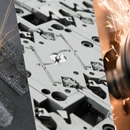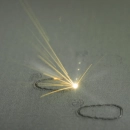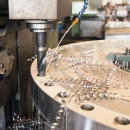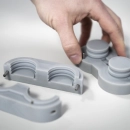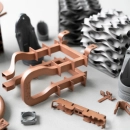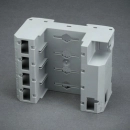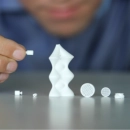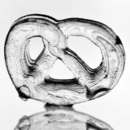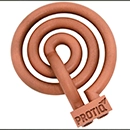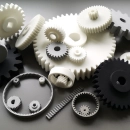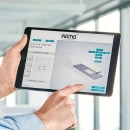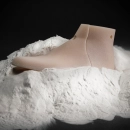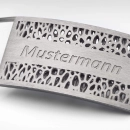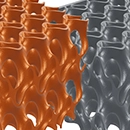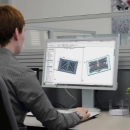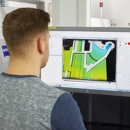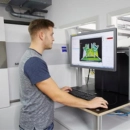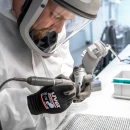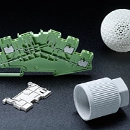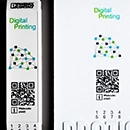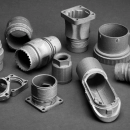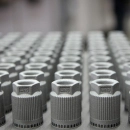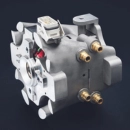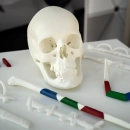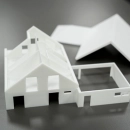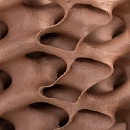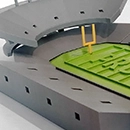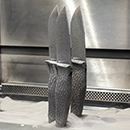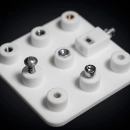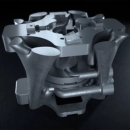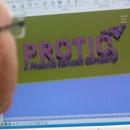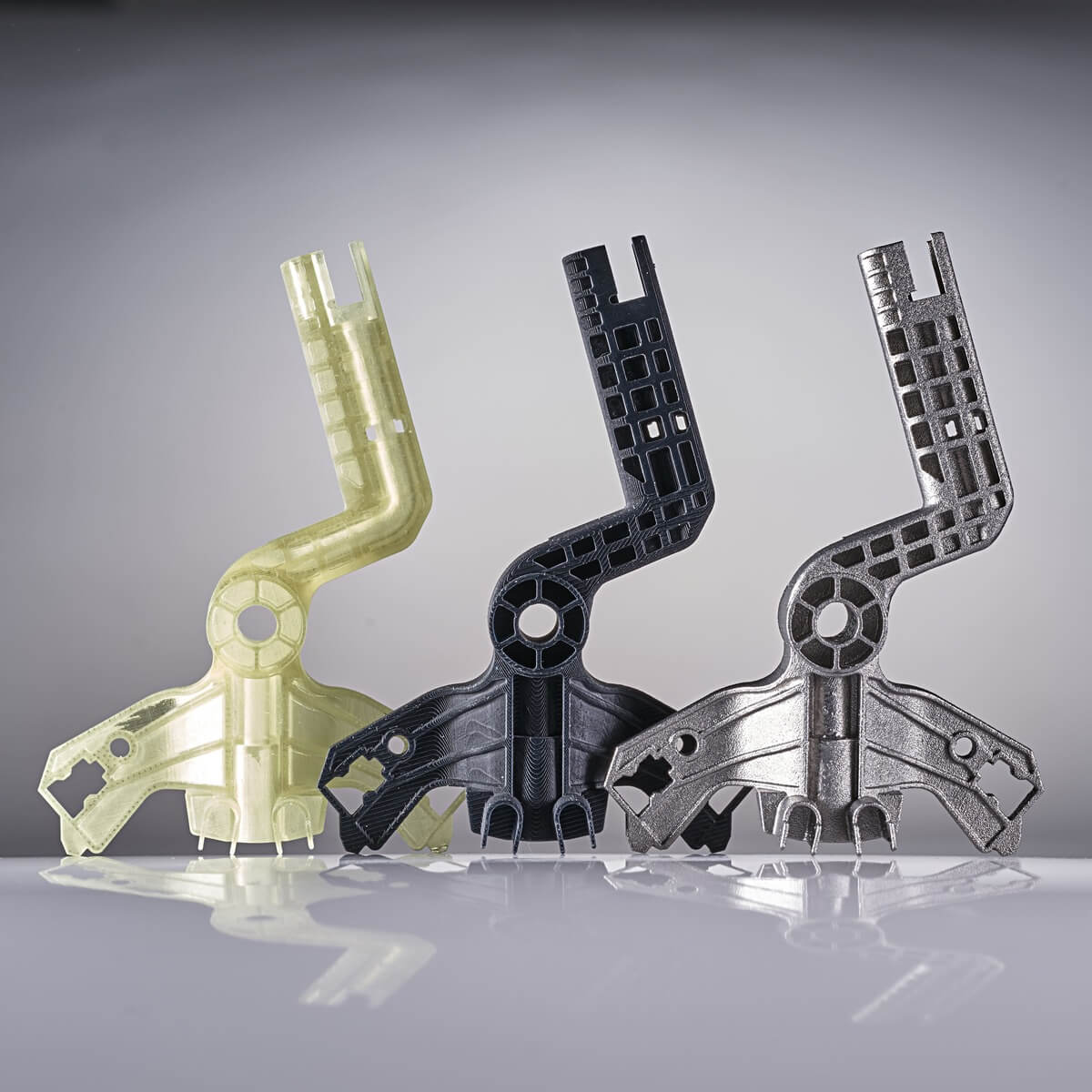Hot Lithography
The process
Hot Lithography is a laser-based 3D printing process which, thanks to a special heating and coating mechanism, enables the additive production of precision plastic parts. These are suitable as prototypes and for use in industrial applications. Due to the special hot layer technology, highly viscous and solid starting materials can be processed. Thus, hot lithography enables 3D printing of components that have excellent material resistance and at the same time a smooth, model-true surface.
Hot Lithography - Manufacturing process with patented hot layer technology
In order to bring the resins into a workable state, they are heated up to 120° C by means of a special heating mechanism. A special hot layer technology allows the exact and individual regulation of the temperatures during the different process steps. This prevents overheating and thus polymerisation of the material. Once the ideal processing temperature for the respective photopolymer has been reached, the 3D object is constructed by a high-precision laser scanner with light wavelengths of 375 nm in the UV range and 405 nm in the blue-violet, visible range. Similar to stereolithography, hot lithography enables 3D printing of coloured, colourless and transparent components as well as the use of filled and coloured material systems.
- Production of very precise plastic parts suitable for industrial applications
- Components with good impact strength and heat resistance
- First class surface quality
- Processing of dyed and filled material systems
- Printing of colourless and transparent components
Advantages
Materials
The high-performance photopolymers used for hot lithography are available in a very viscous to solid state at room temperature. The plastics consisting of macromolecules can be processed into components with the best material and surface quality by the additive manufacturing process Hot Lithography.
Cubicure Evolution
Characteristics
Cubicure Evolution is characterised by a special blend of temperature resistance (up to 82 °C), strength, rigidity and toughness. Products manufactured from this resin have a matt surface, an exceptionally good feel and are suitable, for example, for cutting threads for secure screw connections with other components. Cubicure Evolution is used for the production of functional prototypes and entire series in the small and medium segment.
| Base color | dark - darkgray |
| Price | |
| Precision | |
| Stability | |
| Flexibility | |
| Surface | |
| Feel | smooth / matte |
Cubicure Precision
Characteristics
Cubicure Precision has been specially developed for the production of components in the mini and micro component sector. Products made of this material can be exposed to temperatures of up to 90° C and are characterised by their particular toughness, strength and rigidity. Processing in hot-lithography allows the economic production of miniature components in series.
| Base color | transparent- yellowish |
| Price | |
| Precision | |
| Stability | |
| Flexibility | |
| Surface | |
| Feel | Very smooth / satin |
Cubicure Evolution FR
Characteristics
Cubicure Evolution FR is the first UL94 V0-classified photopolymer. This flame-retardant plastic opens up new fields of application in additive manufacturing for the first time, with the highest demands on fire behaviour and at the same time the best possible manufacturing precision. This material is suitable for the production of small and medium series of flame-retardant final components as well as for fully functional prototypes in component and product development. This filled, non-flammable and halogen-free material can be used at ambient temperatures of up to 80°C after a final thermal hardening process.
| Base color | brown |
| Price | |
| Precision | |
| Stability | |
| Flexibility | |
| Surface | |
| Feel | smooth / matte |
Cubicure ThermoBlast
Characteristics
The polymer Cubicure ThermoBlast withstands ambient conditions of up to 300° C and is extremely resistant to chemicals. The material thus offers a wide range of possible uses in industrial applications, for example in the high-temperature range in the aerospace industry or in the electrical industry.
| Base color | transparent brownish |
| Price | |
| Precision | |
| Stability | |
| Flexibility | |
| Surface | |
| Feel | very smooth / satin |
Hot Lithography in the application
The 3D printing process Hot Lithography enlarges the range of applications for additively manufactured plastic components. Thanks to first-class material properties, the products can withstand high temperatures and impact rates and can therefore be used in industries such as aerospace, vehicle construction and the metal industry. The components are also suitable for medical applications due to their excellent material resistance and model-accurate implementation. Hot Lithography also impresses with its excellent structuring accuracy, which is achieved by a laser diameter of up to 10 µm. This precision enables the production of filigree miniature components of impressive quality, which are used, for example, in communication and information technology as well as in biotechnology and medical technology.
High standards
Components that are used in technical or medical applications must meet special requirements: In addition to thermo-mechanical properties such as excellent impact strength and heat resistance, a precise surface is required that exactly meets the model specifications.
All these criteria can be met by processing high-performance photopolymers with hot lithography. The 3D printing process forms the interface between stereolithography and powder-based additive manufacturing methods, as it combines the respective advantages: The structural accuracy and good surface quality of components produced by stereolithography and the robustness of products created by laser sintering in the 3D printer.
Technical information
- Wall thicknesses from 0.1mm
- Coating thickness between 50 µm and 100 µm
- Components with dimensions up to 200 mm x 100 mm x 300 mm in one construction process
- Tolerances: +/- 0,05mm
- Reproducibility: +/- 0,01mm
- Beam diameter in laser focus of up to 10 µm for high structuring accuracy
Restrictions
- Conditionally UV-resistant
- Requires cleaning after the construction process
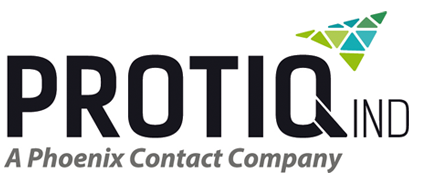


 Deutsch
Deutsch English
English Italiano
Italiano